Art History (Prehistoric Art-Greek Art)
0.0(0)
0.0(0)
Card Sorting
1/91
Earn XP
Description and Tags
The history of art spanning from the Paleolithic Period to art as the Gothic period.
Study Analytics
Name | Mastery | Learn | Test | Matching | Spaced |
|---|
No study sessions yet.
92 Terms
1
New cards
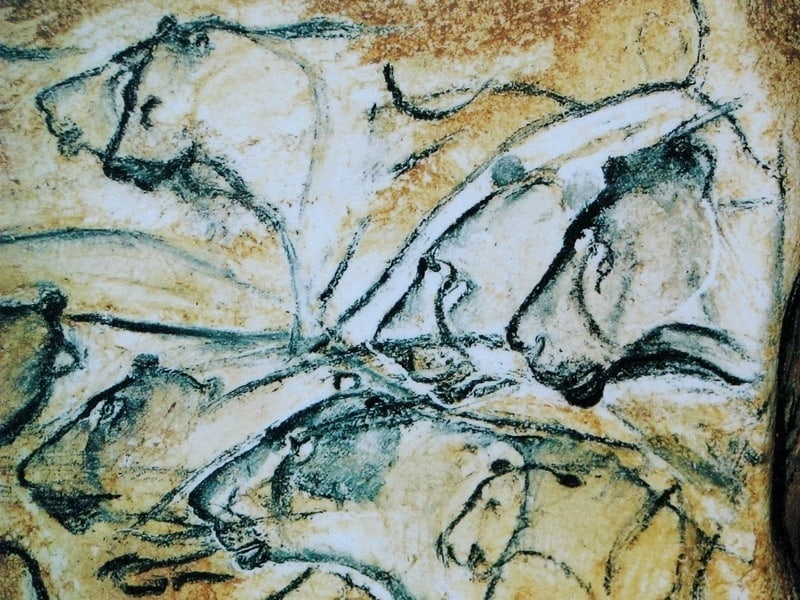
Paleolithic Period
In the earliest period of art, many of the pieces are cave paintings ae early statues. Many pieces are found in swallow caves and rock shelters. Well-known pieces of this time are the Chauvet Cave, Cueva de las Manos, and the Woman of Willendorf.
2
New cards
Woman of Willendorf, Austria, 24,000-22,000 BCE
It a statue that depicts a naked female. The debate is the statue is either a fertility goddess or a pregnant woman
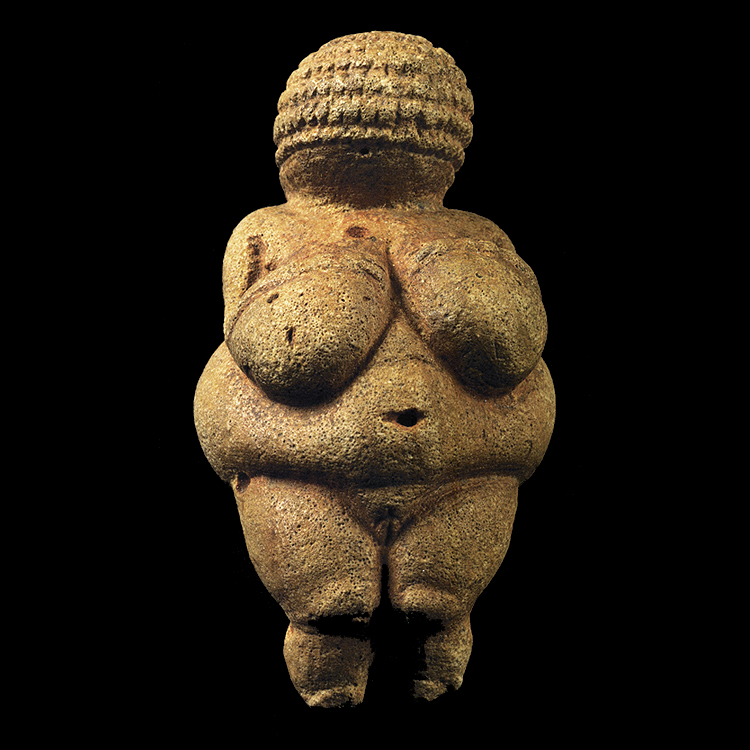
3
New cards
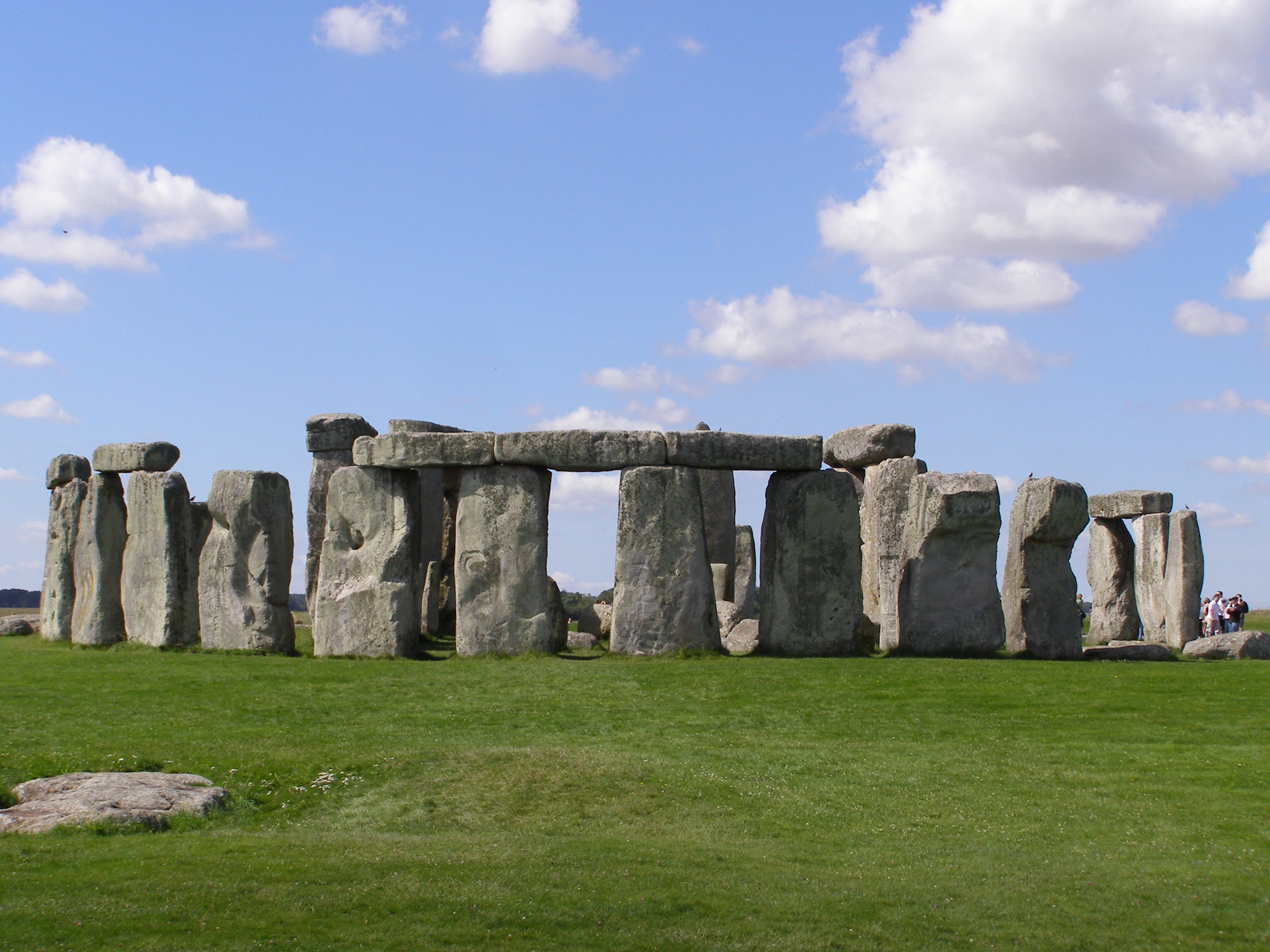
Neolithic Period
The earliest settled communities began and we see the use of architecture and megalithic structures being used by early humans. Well-known communities are the Ain Ghazal and Catalhyuk while well known megalithic structures of this time is the Stonehenge
4
New cards
Radiocarbon dating
Scientific method that used to date cave art as it uses carbon-14 to estimate the age
5
New cards
Megalithic
A large stone used as a monument in prehistoric time.
6
New cards
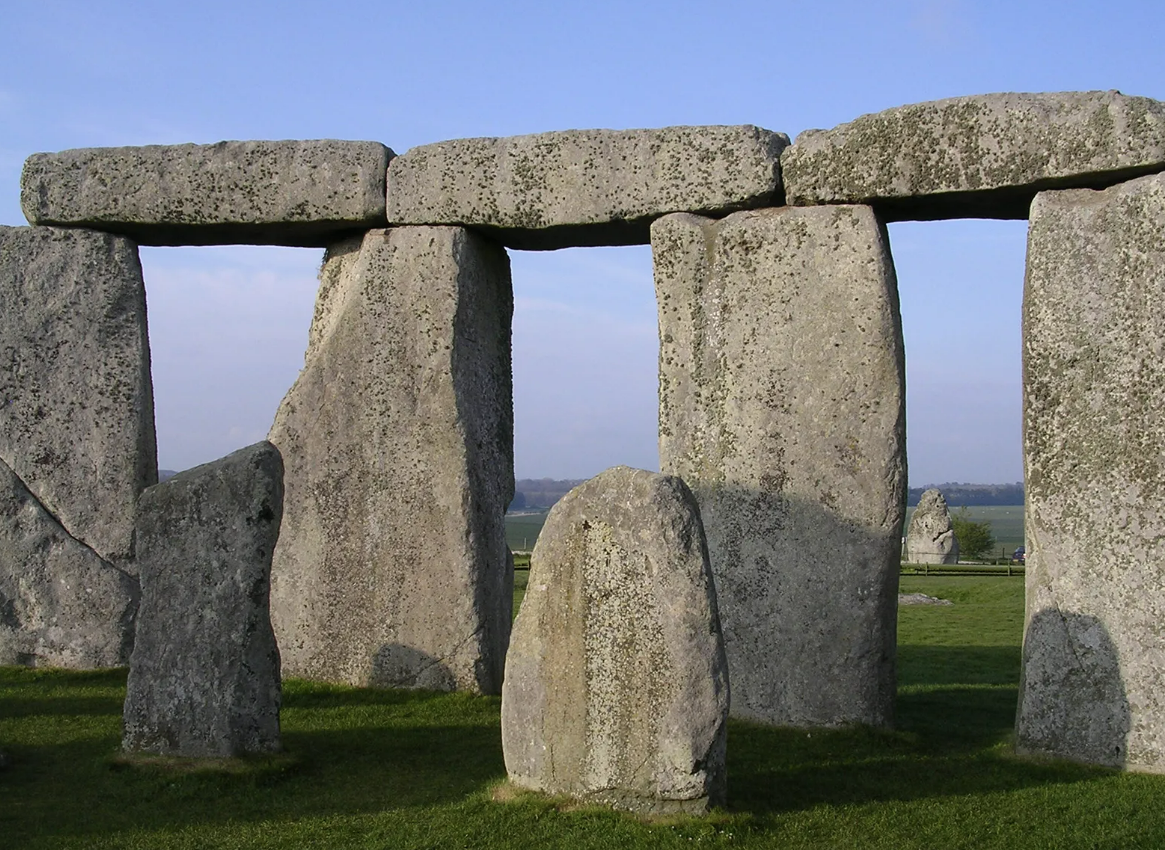
Post and Lintel
A building technique were two stones upright are holding another stone on top
7
New cards
Adobe
Sun dried clay that is made into bricks. Usually used in neolithic communities.
8
New cards
Low Relief
Artwork were the pieces are craved into a stone only slightly to stand out from the background
9
New cards
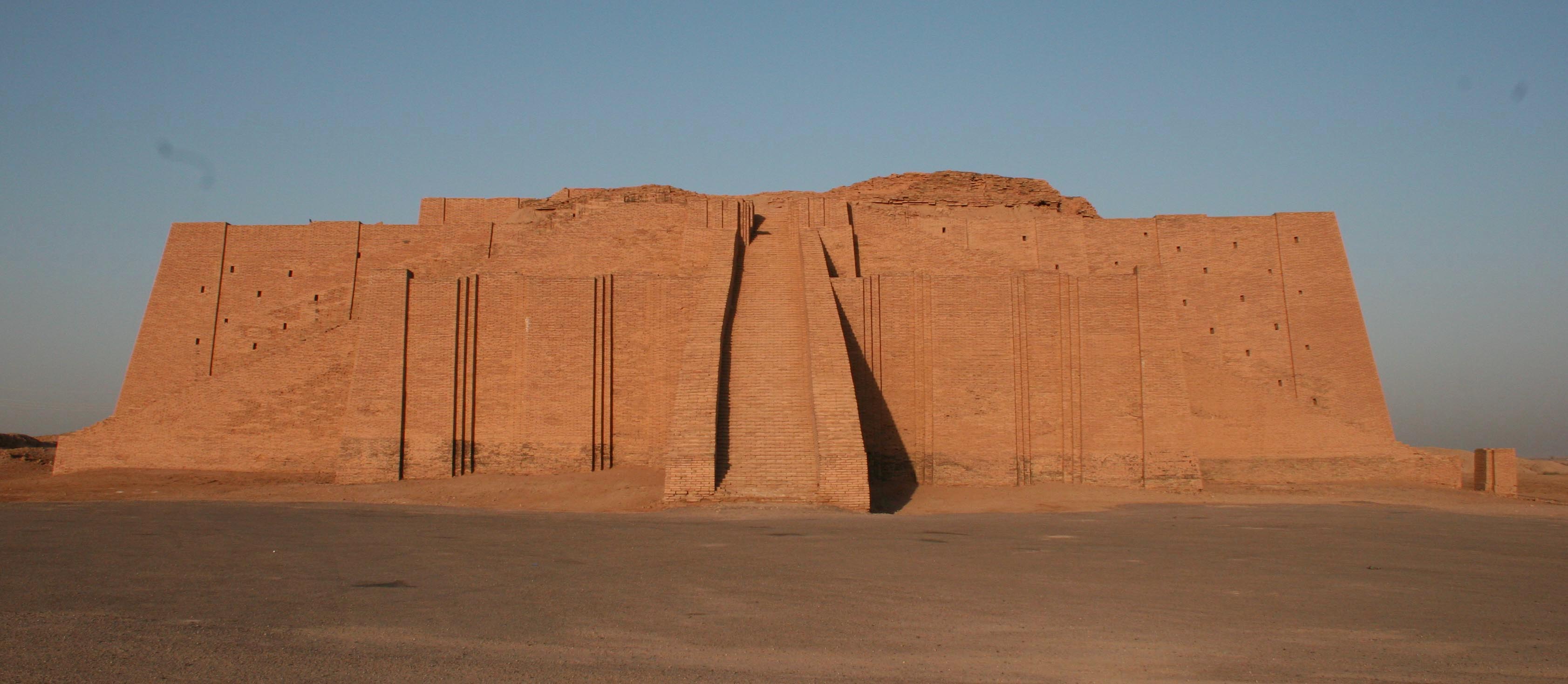
Sumerians (3500-2340 BCE)
World’s first civilization with the world first city known as Uruk. The civilization was made up of city-states. The artwork most well known of this civilization is their temples with ziggurats and votives for their gods.
10
New cards
Royal Standard of Ur, Iraq, 2500-2400 BCE
Piece that depicts a pictorial narrative with one side being a battle and another side being a feast. Uses hierarchy of scale and made with lapis lazuli.
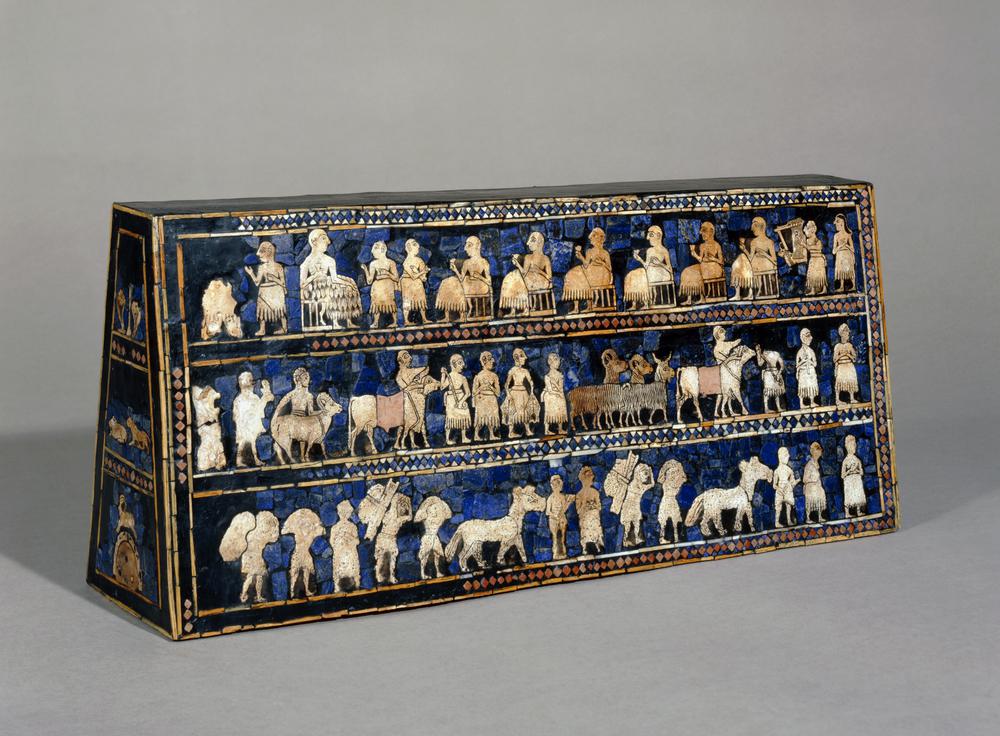
11
New cards
Early Dynastic Period (2950-2350 BCE)
This period is characterized by cities emerging such as Khafajah and Ur in the Southern area of Mesopotamia
12
New cards
Akkadian Empire (2334-2193)
Was one of the first empire with the first king being Sargon. Artwork that well known during this period is the Stele of Naram-Sin and the Disk of Enheduanna
13
New cards
Stele
An upright stone slab that usually depicts an pictorial image
14
New cards
Votive
Offerings for their god or a person who passed away
15
New cards
Hierarchy of scale
When a figure in art is larger than other figures in order to represent status or importance. Can be see in Mesopotamian and Egyptian artwork
16
New cards
Ziggurat
A stepped tower and base for a temple of a god. This temple was meant to be closer to the heavens which is why the towers were created,
17
New cards
Register
Registers usually depict a pictorial narrative scene in a horizontal band
18
New cards
Cuneiform
Mesopotamian inscription that was inscribed by a reed stylus into wet clay
19
New cards
Predynastic Nile Period
This period was when King Narmer unified upper and lower Egypt after a long period of separation between the two parts. This period is defined by mastabas and the early stages of the necropolis.
20
New cards
Hieroglyph
Script of writing in Egypt that represents concepts and sounds along with words
21
New cards
Palette of Narmer, Egypt, 3000 BCE
One of the earliest hints of hieroglyphic writings and show cases a hierarchy of scale with the King Narmer being the largest figure.
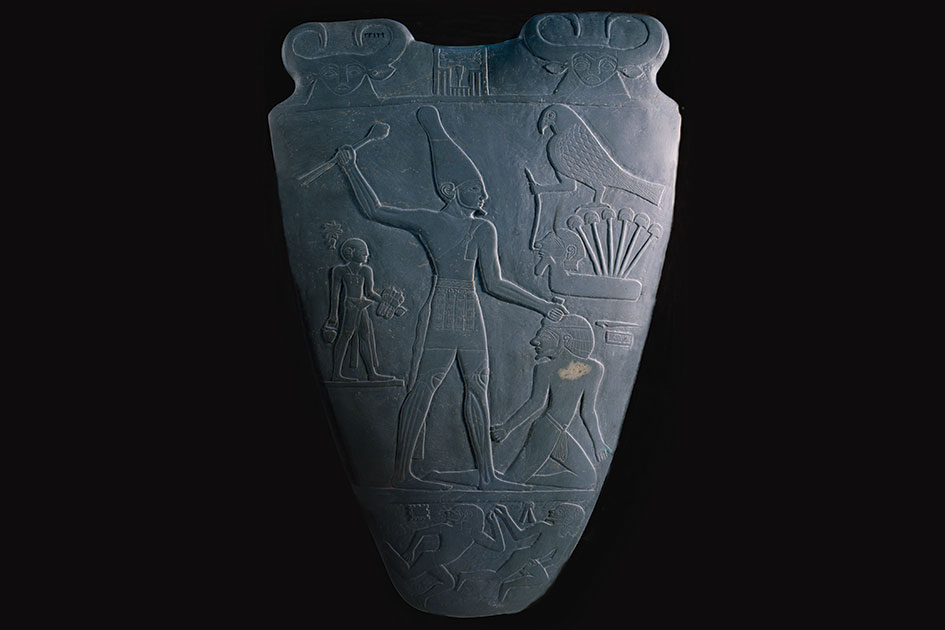
22
New cards
Necropolis
City where the dead kings were buried. Saqqara and Giza are the two most well known cities.
23
New cards
Ka
Was the spirit or lifeforce in Ancient Egyptians belief
24
New cards
Serdab
Area in a funerary complex that would hold a statue of a king ka for the afterlife
25
New cards
Mastaba
One of the earliest type of Egyptian tombs that was more simple than a pyramid. These were mud/stone structure with sloping sides and a flat top.
26
New cards
Old Kingdom (2686-2160 BCE)
Was define by the 3rd and 4th Dynasties rule of Egypt. Here we see funerary complexes being more complexed with artwork and temples. The most well known artwork of this time is the funerary complex of Djoser and the Pyramids of Giza.
27
New cards
Step Pyramid
Were made as a series of stacked mastaba-like structures with limestone blocks. These structure would be subterranean with shafts, corridors, chambers, and burial vault. The most famous of these structures being in Giza.
28
New cards
Middle Kingdom (2055-1650)
After a period of separated this period was define by it ruler Nebhepetre Mentuhotep who reunited Upper and Lower Egypt once again. This period artwork can be define by the funerary complex of Nebhepetre Mentuhotep and the statue of Senusret III
29
New cards
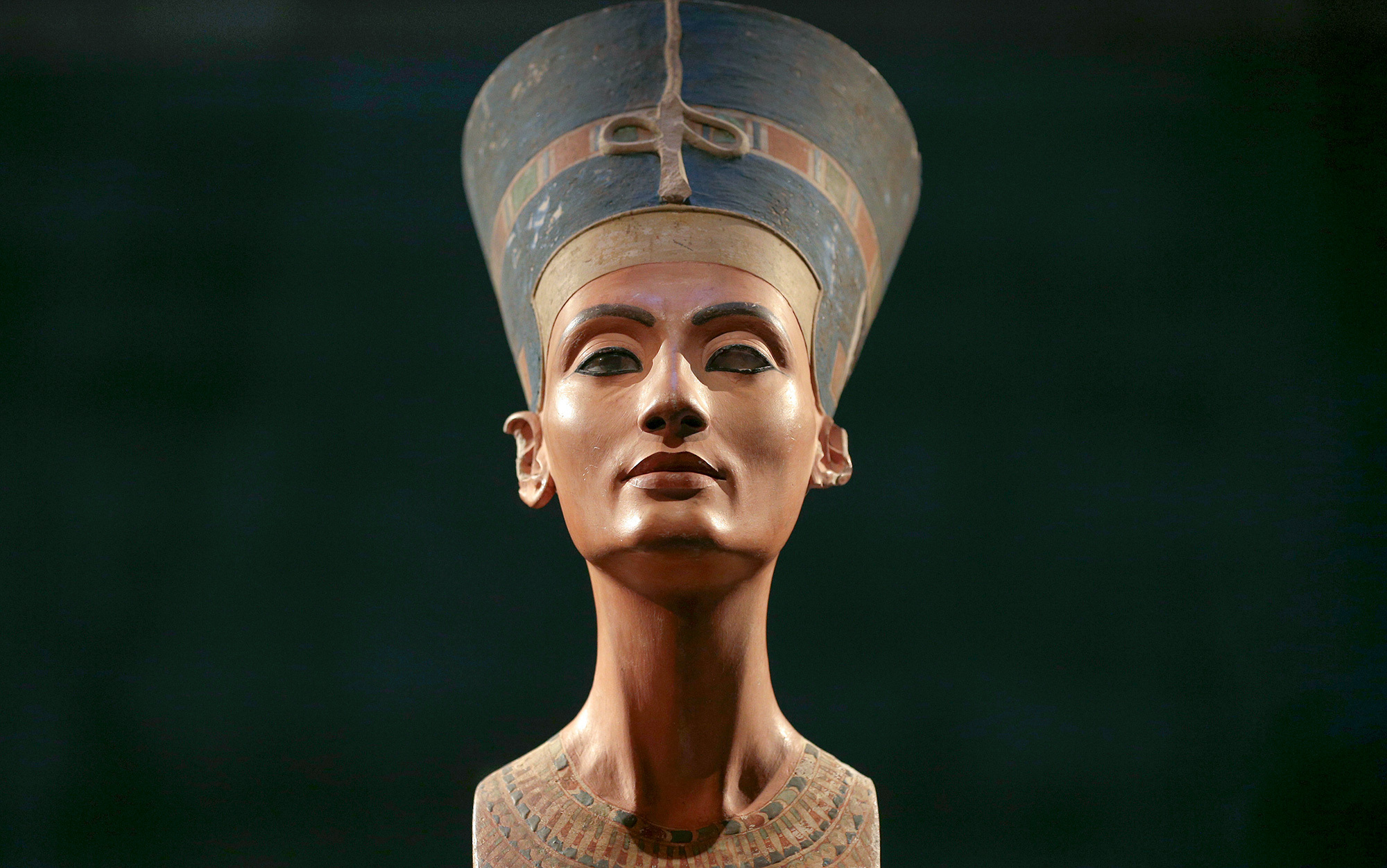
New Kingdom (1550-1069)
Was define by Theban rulers as well as the rule of Amenhotep who changed the standard polytheistic beliefs to a more monotheistic belief with the worshipping of the sun god Aten. This period artwork can be define by the funerary complex of Hatshepsut, the bust of Nefertiti, and the Tomb of King Tut.
30
New cards
Sarcophagus
The innermost part of the Egyptian coffin, usually made of beaten gold with stones, designs, and hieroglyphs inlaid on it.
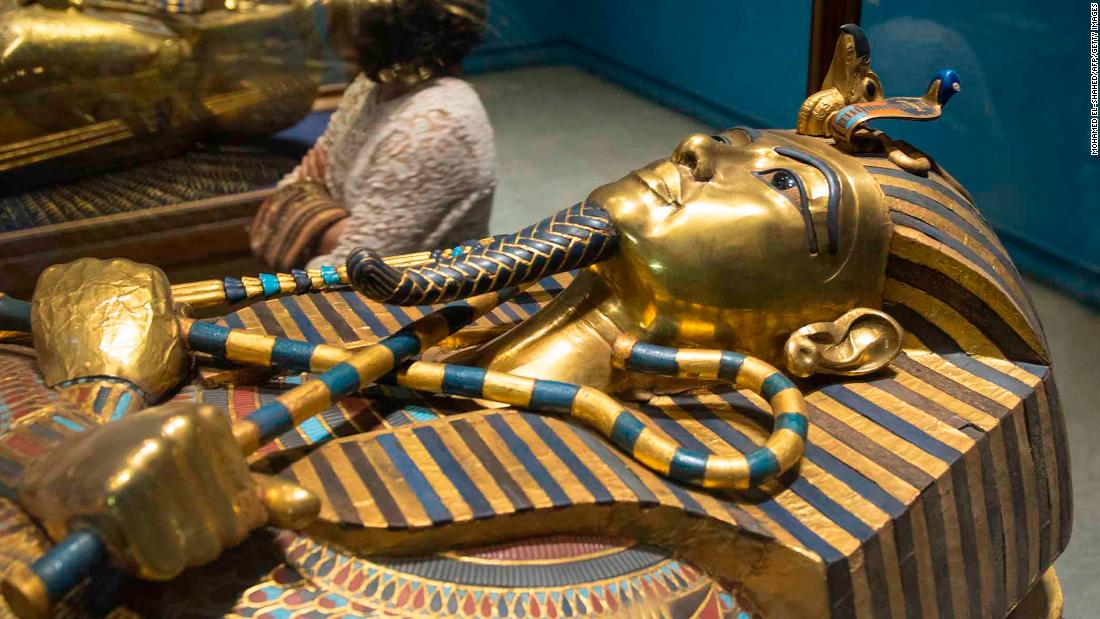
31
New cards
Obelisks
A tall pillar made of a block of stone with a pyramid shape on top. Made as an offering to the gods and link the king to the gods.
32
New cards
Sunken Relief
Artwork that carved deeply into the stone and is not risen
33
New cards
Book of the Dead
Scrolls that would depict the trials and tribulations of the afterlife The scroll at times would also contain spells in order to help a person in the afterlife.
34
New cards
Colossal Statue of Akhenaten, Egypt, Amarna, Period, 1350 BCE
This statue not only had the king with the crook and flail the symbols of Osiris but in mummy style burial. Along with that the statue itself is more androgynous and feminine looking with theories either having it be due to his deformations or as an artistic move to be more align to god.
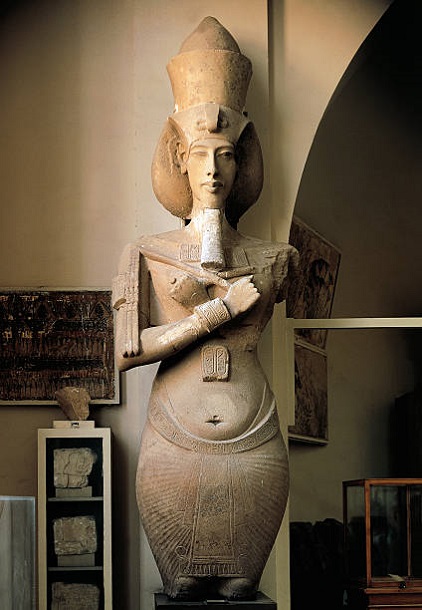
35
New cards
Last Judgment before Osiris, Book of the Dead, Egypt, 1275 BCE
Is a papyrus scroll that illustrates a narrative tale of the afterlife. This part itself showcase the main character with the god Anubis, who weigh his heart before going to meet Osiris.
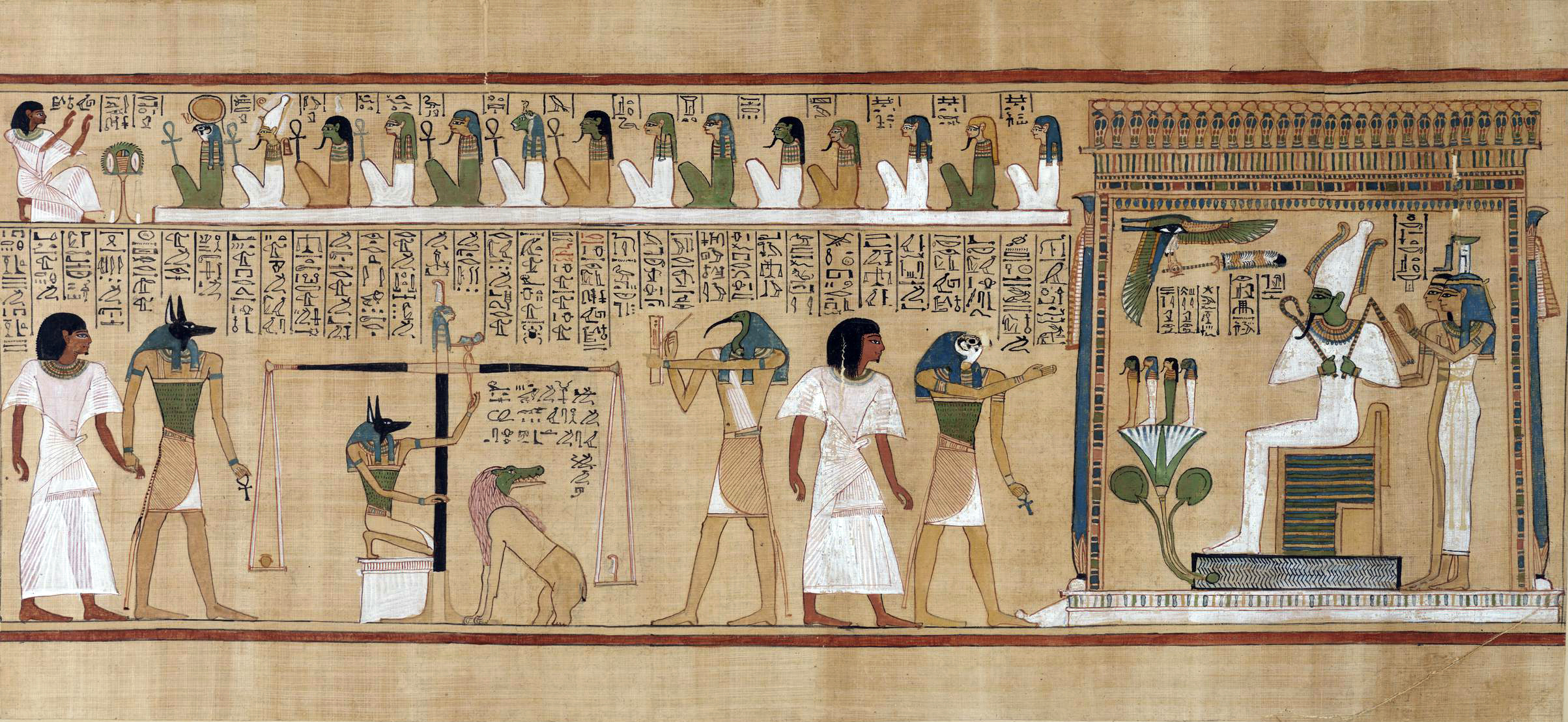
36
New cards
Babylon (2000-1600 BCE)
With the fall of the Akkadian Kingdom, we see an emergence of city-states such as Babylon rising in power. Starting with the first king King Hammurabi. This period of artwork can be defined by the Law Stele of Hammurabi
37
New cards
Assyrian Empire (1000-600 BCE)
An empire that spread power among the east coast of the Mediterranean and known for their great warriors along with their vast palaces. Artwork from this period can be define by the Palace of Ashurnasirpal II pieces such as the Lamassu and the throne room.
38
New cards
Neo-Babylonian Empire (629-539 BCE)
After the death of Ashurbanipal the Babylonians revolted and recapture the city of Nineveh and created a brand new empire. While only lasting for 90 years their artwork can be defined by the Ishtar Gate of Babylon and the Babylonian Map of the World.
39
New cards
Ishtar Gate, Babylon, 605-562 BCE
Was the main entrance to the city of Babylon and named after the Babylonian goddess. The gates depicts molded reliefs of varying animals such as lions, bulls, and dragons.
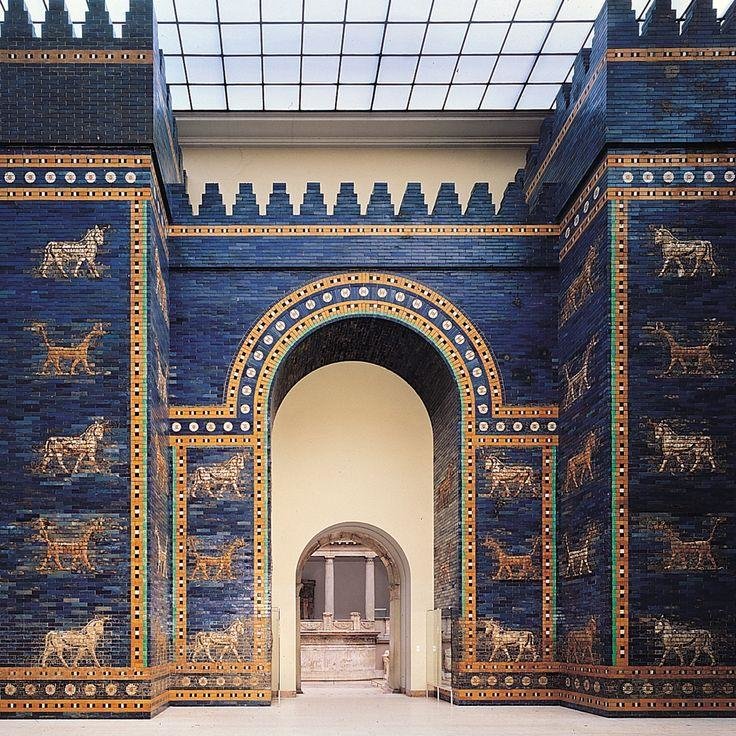
40
New cards
Lamassu
A statue that depicts an animal hybrid with the head of a man and a body of either a lion or bull. They are seen as mystic and wise beings in mythology.
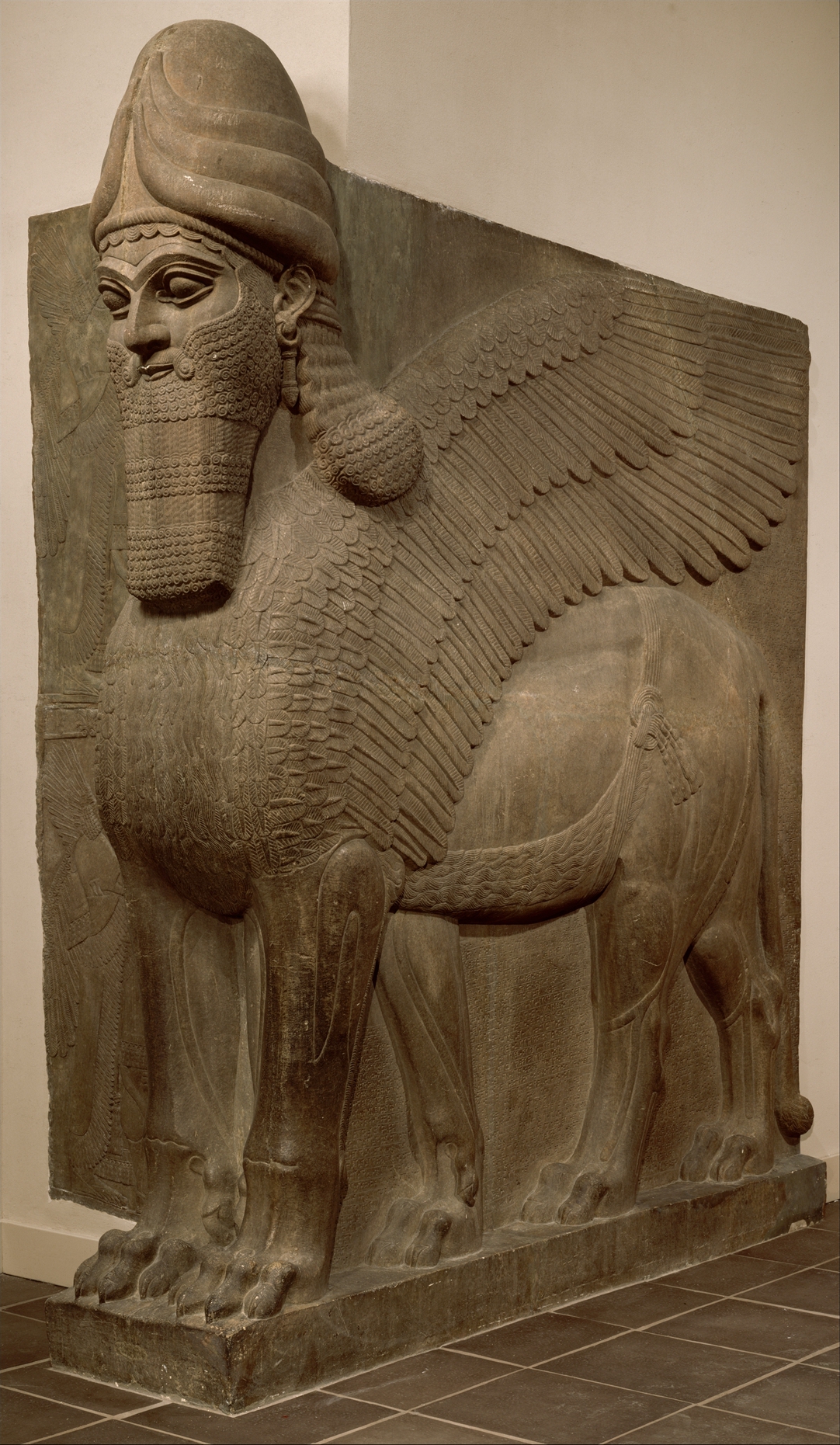
41
New cards
The Achaemenid (Persian) Empire (550-330 BCE)
One of the last great empires in West Asia that began with the ruler Cyrus the Great. This empire fell due to Alexander the Great however this period artwork was defined by the city of Persepolis.
42
New cards
Material Culture
The objects and items that are used in everyday life such as combs, knives, pins, and etc
43
New cards
Shang Dynasty (1600-1046 BCE)
This was one of the first recorded dynasty in China were we see huge population growth and city building. We also see the use of bronze, math, and astronomy as well as a development of a written language. This period artwork is defined by the fang dings and the bianzhong
44
New cards
Taotie
Stylized animal mask with horns, legs, and tusk. Many of these were on fang dings that were found dated back from the Shang Dynasty.
45
New cards
Zoomorphic
An abstract depiction of animals that could have a spiritual tie.
46
New cards
Fang Ding
A rectangular vessel that usually has an animal mask or taotie on it. It believed that it was used for food and drink.
47
New cards
The Qin (Ch’in) Dynasty (221-206 BCE)
Was the first unified Chinese Empire that was the end of the Warring States period that lasted from 475-221 BCE. The most prominent art from this period was the Terracotta soldiers found in the Tomb complex of the First Emperor of Qin.
48
New cards
Terra Cotta Army of the First Emperor of Qin, China, 210 BCE
The Tomb of 1st Emperor of Qin had a thousand of life-size soldiers and horses that were all uniquely designed.
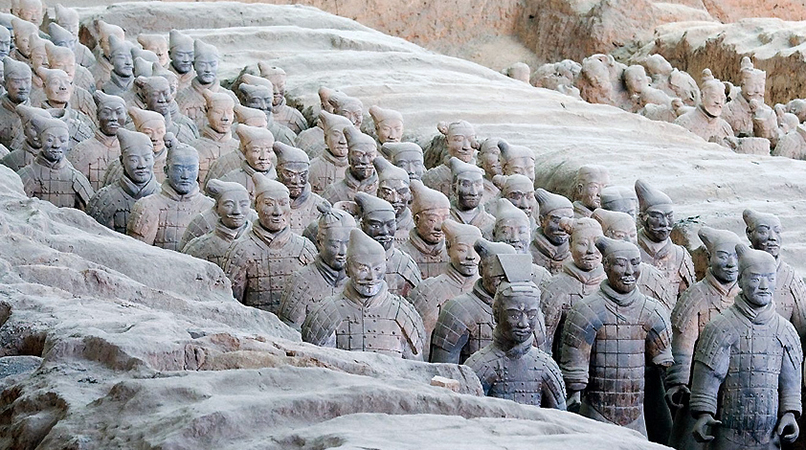
49
New cards
The Olmecs (1200-400 BCE)
One of the earliest ancient cultures in Mesoamerica. Here we see a lot of public artwork for people to interact with. This piece is mostly defined by the colossal head and the La Venta throne.
50
New cards
La Venta Throne, Olmec, 900-400 BCE
A throne with a high relief image of a leader emerging with what believe to be a cave that represent the underworld. As the Olmecs believed in 3 realms known as the sky, earth, and underworld.
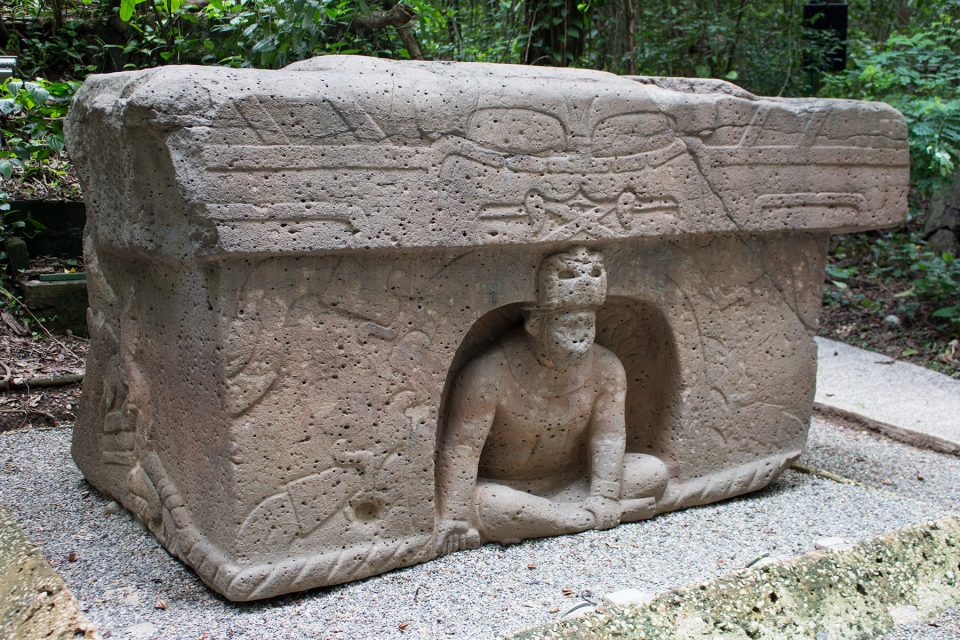
51
New cards
Cyclades (3000-2000 BCE)
The group of people from the kyklos or island of circle that around the island of Delos. These people were seafaring and connected to those who were around. These people artwork is define by their Cycladic marble figures.
52
New cards
The Minoans (3000-1180 BCE)
The people that lived on the island of Crete and were known for this palaces. Their artwork can be define by the Palace at Knossos as well as the frescos in the Palaces such as the Toreador
53
New cards
Light Well in the Palace at Knosses, Crete, 1700-1500 BCE
Part of the Minoan palaces that has a painted fresco

54
New cards
The Mycenaean (3000-1000 BCE)
These people lived on mainland Greece and believed to take influenced from the Minoans. Their artwork is defined by the citadel of Mycenae ad their use of cyclopean masonry
55
New cards
Corbeled roof
Stone slabbed that were used as roofs on buildings such as burial pits
56
New cards
Shaft grave
Are grave that are rectangular and lead to an enclosure grave site that usually have multiple burials
57
New cards
Tholos
Also known as beehive graves, these graves are built in a round like structure
58
New cards
Fresco
Wall painting that usually on plaster, these pieces usually are brightly colored and depicts different scenes and creatures.
59
New cards
Geometric and Proto-archaic (900-600 BCE)
When Athens began to become the major center of ceramic production, with their artwork being characterized by linear and geometric motifs on items like kraters.
60
New cards
Archaic (600-480 BCE)
This period of Greek history artwork is mostly defined by the sanctuaries such as the Oracle site of Delphi
61
New cards
Early Classical (480-450 BCE)
This was the beginning of the classical period after the defeat of the Persian. This part of the classical period is defined by the Dying Greek Warriors sculpture from the temple of Aphaia and the Kritios boy from Akropolis
62
New cards
Incised
To cut or engraved an item
63
New cards
High relief
A rise form that was projected from a background
64
New cards
Sanctuary
Temples and spaces for religious worship in Ancient Greek. Many of these places were dedicated to a specific god or goddess.
65
New cards
Peristyle
The columns that surround the outside of the temple
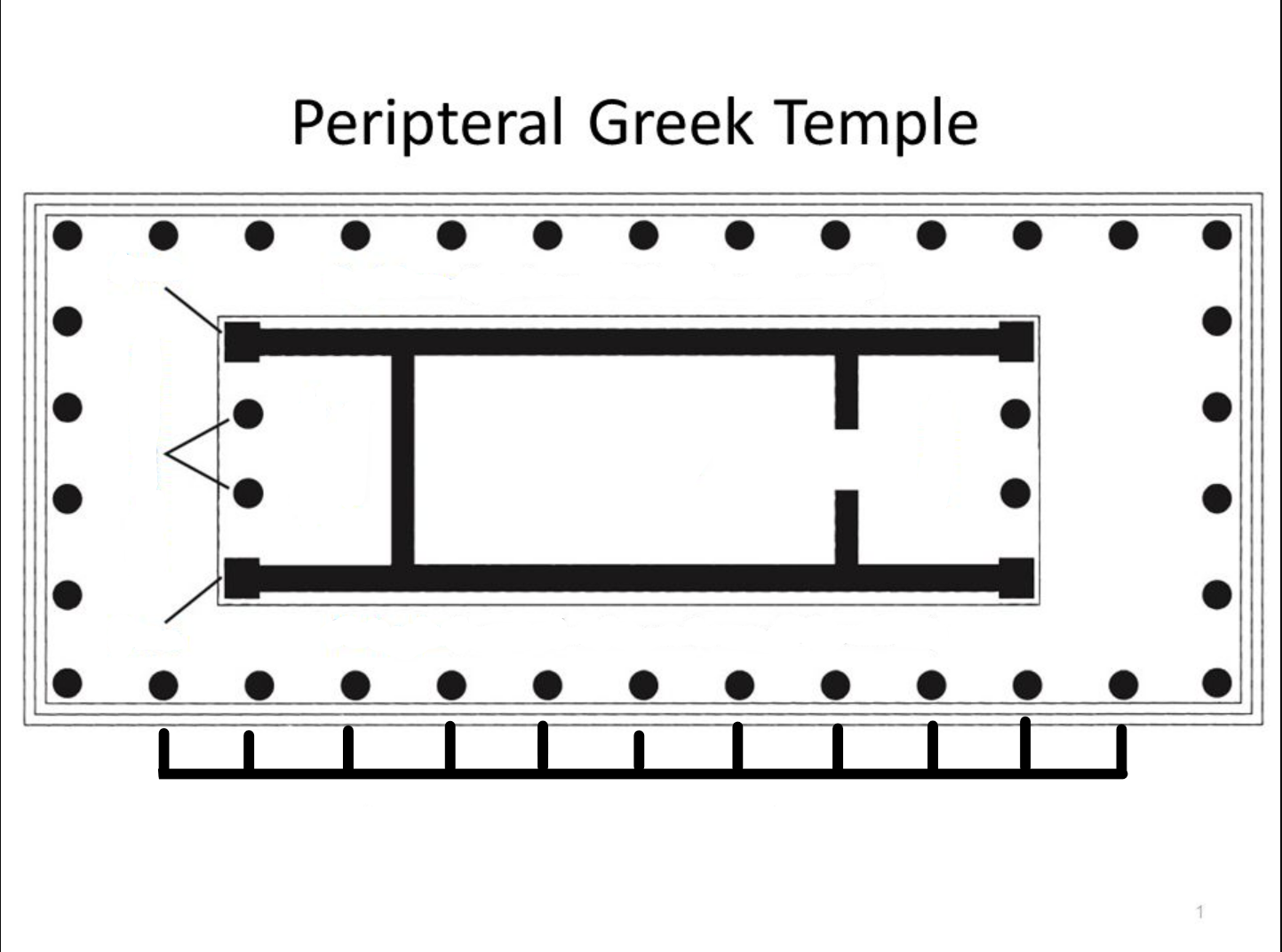
66
New cards
Stylobate
The base that the columns stand on and what raise the temple
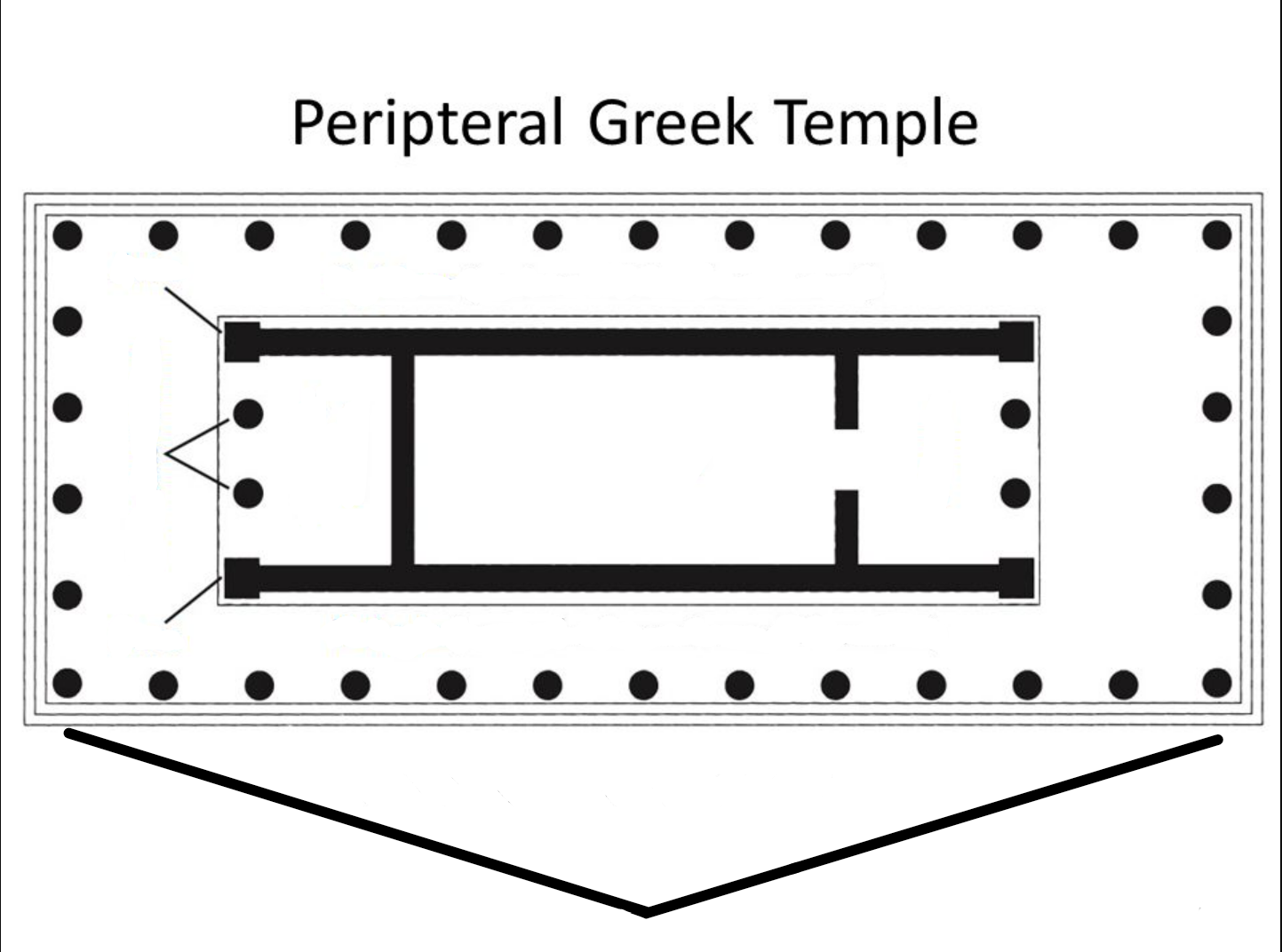
67
New cards
Cella
The inner chamber that house the statue of the god/goddess the temple for

68
New cards
Capital
The top part of the column
69
New cards
Doric order
The order that was mostly used in mainland Greek, classified due to the simplistic of the column.
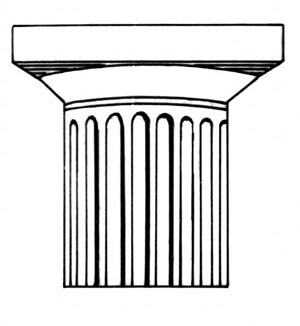
70
New cards
Metopes
A slab on a doric column
71
New cards
Ionic order
More common in the Greek islands in the Aegean sea and was more characterized by a more decorative design and a continuous frieze
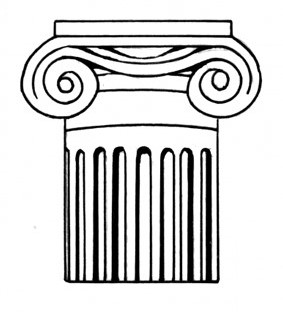
72
New cards
Corinthian order
A mixture of doric and ionic columns that are used
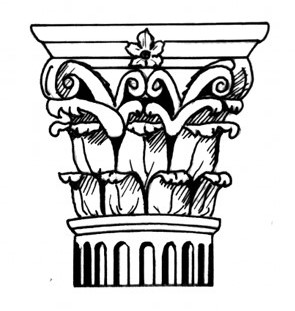
73
New cards
Frieze
A sculpture or painting that usually depicted on the temples top.
74
New cards
Pediment
The triangular part that rest on top of the columns, usually has the frieze as well
75
New cards
Karyatid
Greek female statues that could be use as a column in certain temples
76
New cards
Lost-wax casting
Creating a wax model and wrapping it around clay. Cooking the clay and melting the wax before making the metal statue
77
New cards
Archaic smile
A smile that was seen a brief time in statues from Greek. It believed it was use in an attempt to give life to the figure
78
New cards
Krater
A type of vase that was made in ancient Greek
79
New cards
Agora
A marketplace that usually is a social, civic, and commercial center in ancient Greece.
80
New cards
Kore
Statues of female figures that were made during the Archaic period
81
New cards
Kouros
Naked male figure statues that showcase the concept of youth
82
New cards
High Classical Period (450-400 BCE)
In this period of Classical Greek art we see a focus on beauty, humanism, rationalism, and idealism. This can be showcase by the Parthenon and the Erechtheion
83
New cards
Parthenon, Iktinos and Kallikrates, Athens, 447-432 BCE
One of the grandest temple in all of Greece, made for the goddess of Athena after the Persian war.
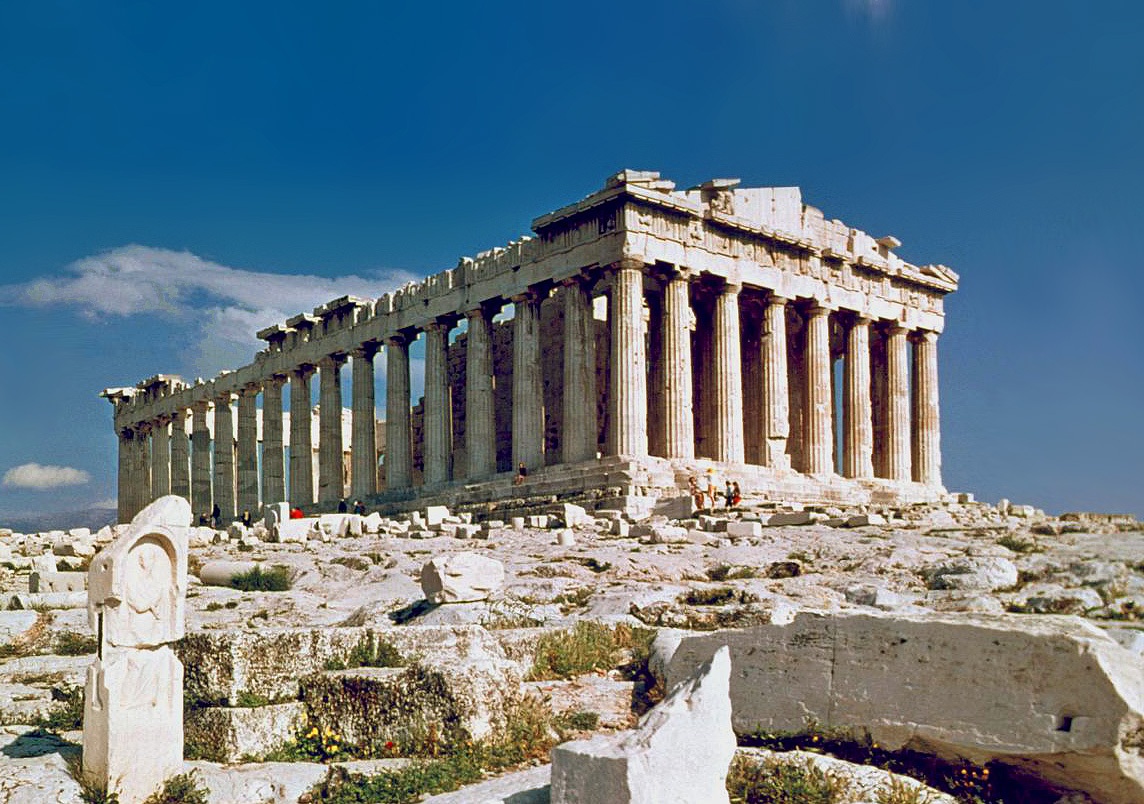
84
New cards
Doryphoros (Spear Bearer), Polykleitos, 450-440 BCE
A statue made from one of the most famous sculptors of these periods. While the original one is lost there been remade of the figure shown here. It believe the original one would be holding a spear.
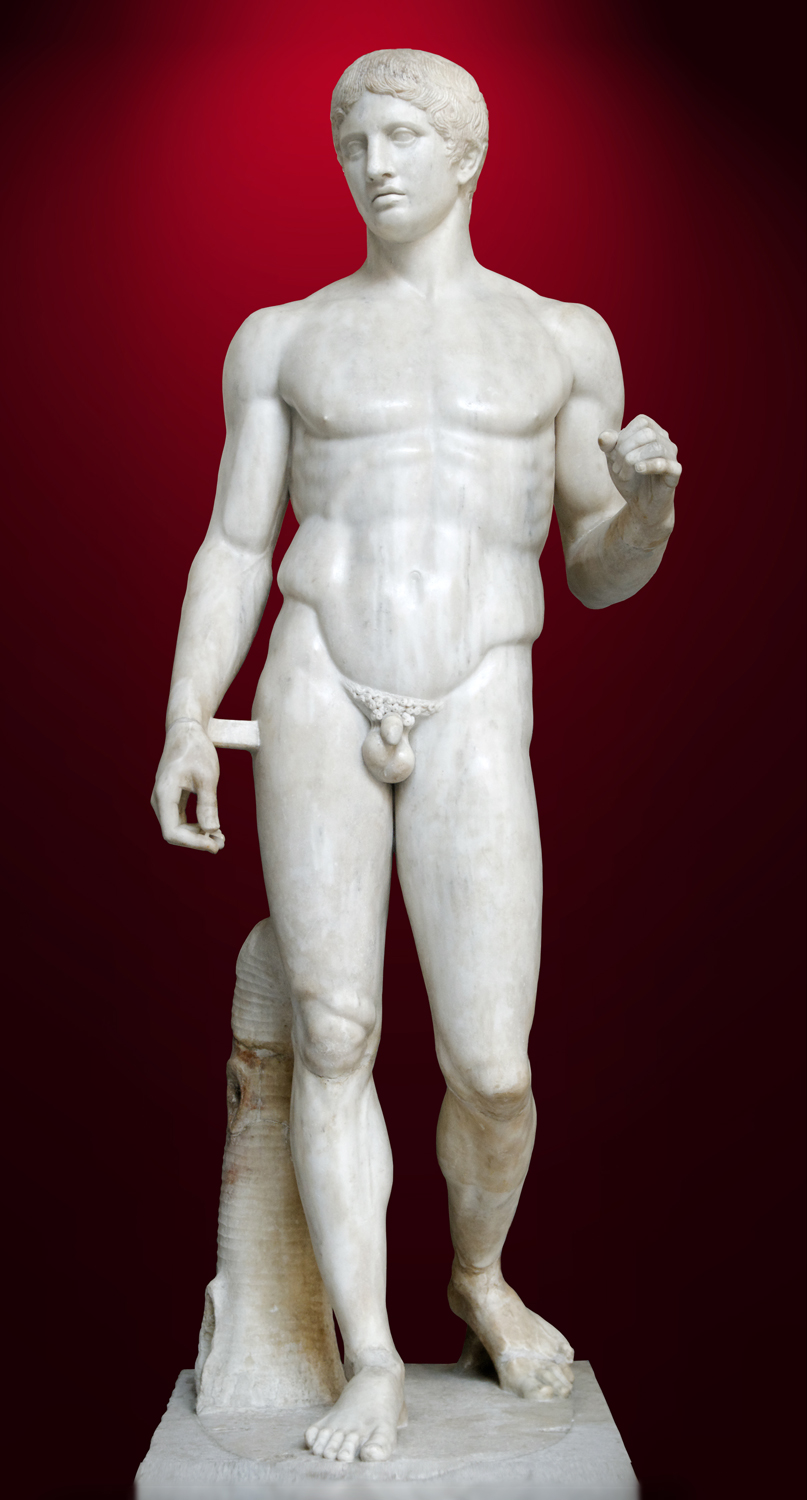
85
New cards
“Canon of Polykleitos”
Polykleitos written rules when it comes to perfection on his statues and his ideals of beauty
86
New cards
Late Classical Period (400-323 BCE)
This period began around the 400 BCE and ended with the death of Alexander the Great. There was a greater focus on emotional and humanization. This is showcase by the pieces
87
New cards
Hellenistic Period (323-330 BCE)
This period was the final stage of the ancient Greece period. It started from the death of Alexander the Great then ended with the death of Cleopatra. This period is characterized by the new Corinthian order of columns and the Temple of the Olympian Zeus.
88
New cards
Winged Victory (Nike) of Samothrace, Greece, 220-150 BCE
A very dramatic statue of the goddess Nike (Victory) made from Pythokritos of Rhodes. It was home in a niche of the temple and showcases wet drapery in statues
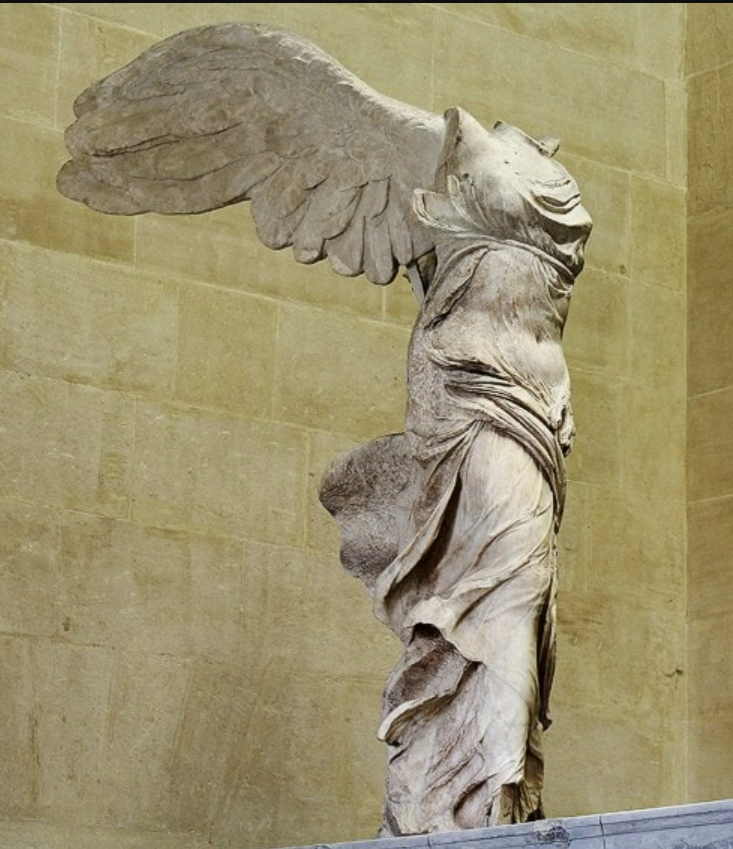
89
New cards
Panathenaic Festival
Annual Athenian festival that was meant for the gods
90
New cards
Contrapposto
Positioning a statue in which the body is pose in an opposition or counterbalance
91
New cards
“Wet drapery”
Describes the process of the sculpturer making the clothes on statue appear to cling to the skin, giving a statue a more dramatic look
92
New cards
Gigantomachy
In Greek mythology this refers to the war between the Greek gods and the giants, who were siblings of the Titan. This period of mythology is showcase in artwork like Athena battling Alkyoneos